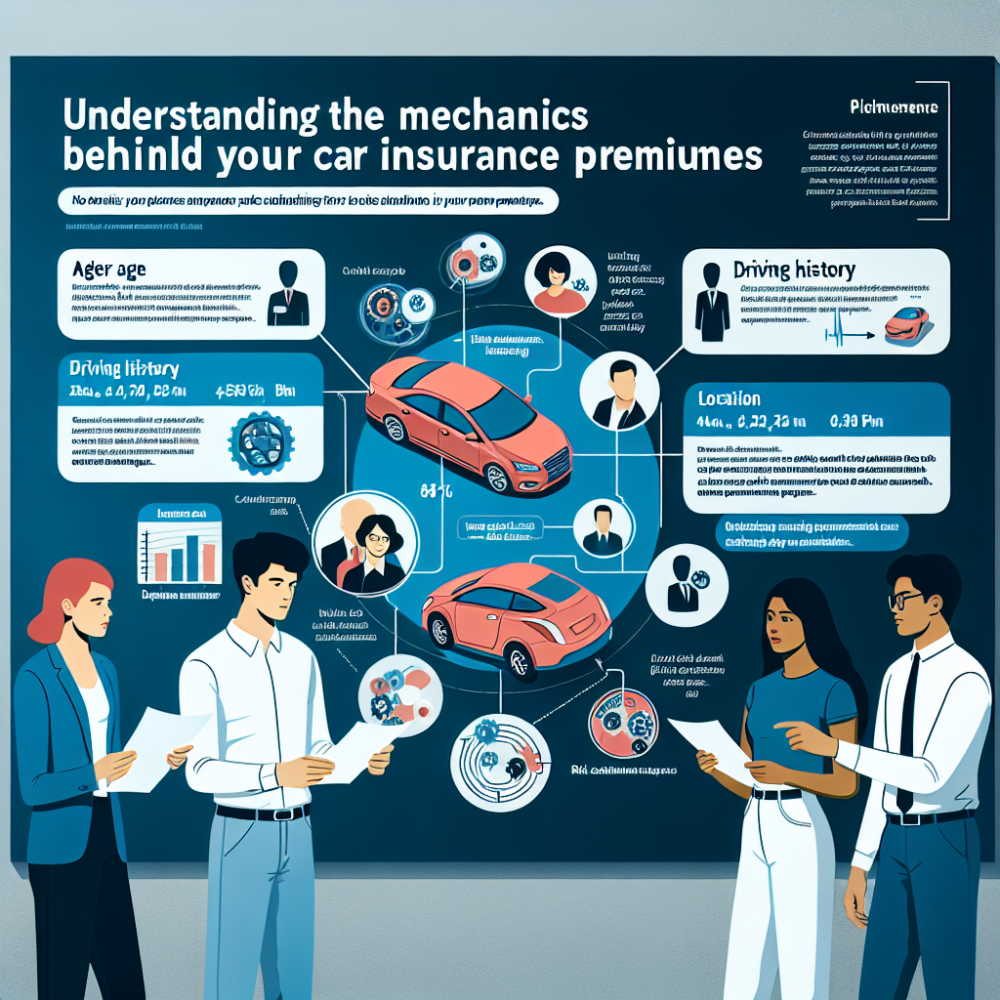Understanding the Mechanics Behind Your Car Insurance Premiums

Posted on: Saturday, March 2nd, 2024
Car insurance companies rely on sophisticated algorithms to determine the rates they offer to consumers. These algorithms assess a wide variety of risk factors associated with individual drivers, their vehicles, and overall driving patterns. This method of risk assessment helps insurance providers to accurately predict the likelihood of a claim being made, allowing them to appropriately price their insurance products. Understanding these factors can empower consumers to take actionable steps to lower their premiums.
At the core of car insurance rate algorithms is the principle of risk assessment. Insurance providers examine historical data and statistical trends to evaluate the probability of a policyholder filing a claim. These calculations involve a vast array of variables including, but not limited to, age, driving history, geographical location, and the type of vehicle insured. For example, younger drivers typically face higher rates due to their perceived inexperience on the road, which statistically correlates with a higher risk of accidents.
Geographical location plays a significant role in determining insurance premiums. Urban areas, with higher traffic density and increased risk of theft, often see higher rates than their rural counterparts. Similarly, regions prone to natural disasters such as floods or hurricanes might experience elevated premiums due to the increased risk of damage to the vehicle. Insurers continuously update their databases with new information, ensuring that rates accurately reflect the current risk landscape.
The type and specifics of the vehicle being insured significantly influence premiums. High-performance cars, which are more likely to be involved in high-speed accidents, can attract higher rates. Furthermore, newer models with advanced safety features might benefit from lower premiums due to their enhanced accident avoidance technologies. Insurers often adjust their algorithms to account for these nuances, rewarding vehicle choices that are inherently less risky.
Your driving record is another pivotal factor considered by insurance algorithms. Minor traffic violations may only slightly increase your premiums, but major infractions like DUIs can significantly impact your rates. Additionally, the length of time you've been driving and the consistency of your driving history are taken into account, with a clean, long-term record potentially leading to lower premiums.
It's also worth noting that credit scores can influence car insurance rates in many states. Insurers argue that there is a statistical correlation between one's credit history and their likelihood to file claims. This means that improving your credit score can be another pathway to reducing your car insurance premiums.
Lastly, the amount of coverage you select and your deductible (the amount you pay out of pocket before your insurance kicks in) can also affect your premiums. Opting for higher deductibles can lower your monthly billed premium since you're taking on more financial responsibility in the event of a claim. On the other hand, choosing broad coverage options increases the insurer's risk, which in turn, might increase your rate.
In conclusion, car insurance rate algorithms are complex systems that assess a multitude of factors to determine individual premiums. By understanding these key elements, drivers can make informed decisions and potentially find opportunities to reduce their insurance costs. It's always beneficial to discuss these aspects with your insurance provider and explore all available options for optimizing your premiums.